That last station of your product page visitors' journey (your product page) is your last chance to:
☑️ Convince readers that your product will make them feel happier, healthier, or more productive.
☑️ Let them feel the pain of the void they'll be left with if they don't buy it.
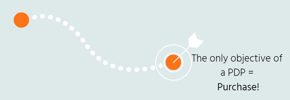
The only objective of a product detail page is that people buy your product online! Subtract any elements from your product detail page that can be distracting the visitor from making them buy your product.
1. Make a Connection
Your customers want to feel like you're talking to them directly.
How can you do that?
- Use language familiar and intuitive to the visitor;
- Speak like a real person;
- Use the word you.
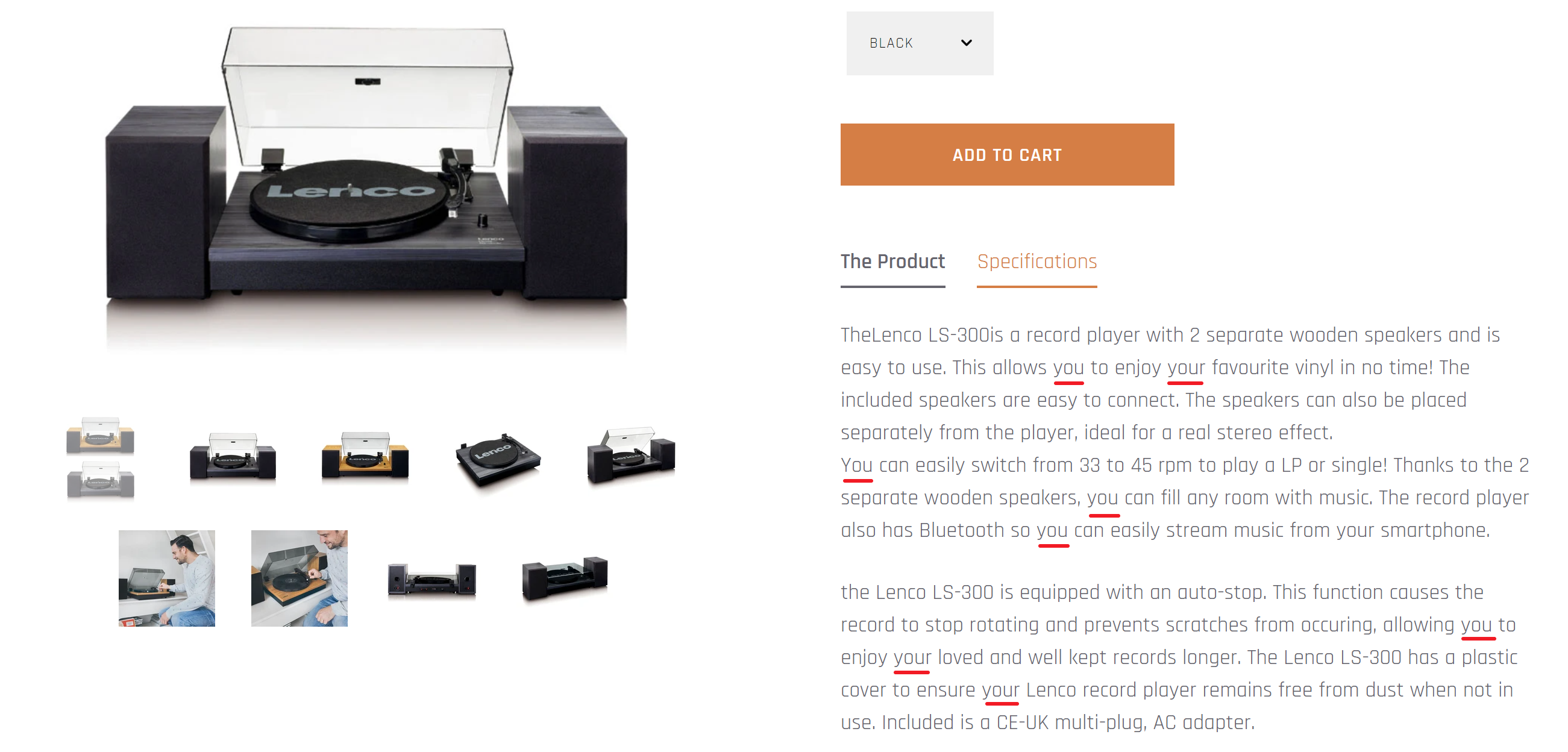
The word 'you' appears 8 times in this product description of a Lenco record player.
Using the word 'you' in your product descriptions can increase your conversion rate significantly. If you are not using this technique yet, give it a try!
2. Keep it Simple and Scannable
People don't read product descriptions; they scan them. Make your product description scannable by using:
- Descriptive headlines (H2) that highlight specific benefits;
- Plenty of white space;
- Easy to scan bullet points.
-1.png?width=1405&name=How%20to%20write%20effective%20product%20descriptions_%20(1)-1.png)
3. Trigger emotions!
By making it vivid.

List everything that:
- Makes the item attractive;
- Is important to know before purchase;
- Remove any barriers before purchase;
- Triggers emotion.
4. Write to your Ideal Customer
Write to your ideal customer!
Try to please everyone, and you'll end up pleasing no one.
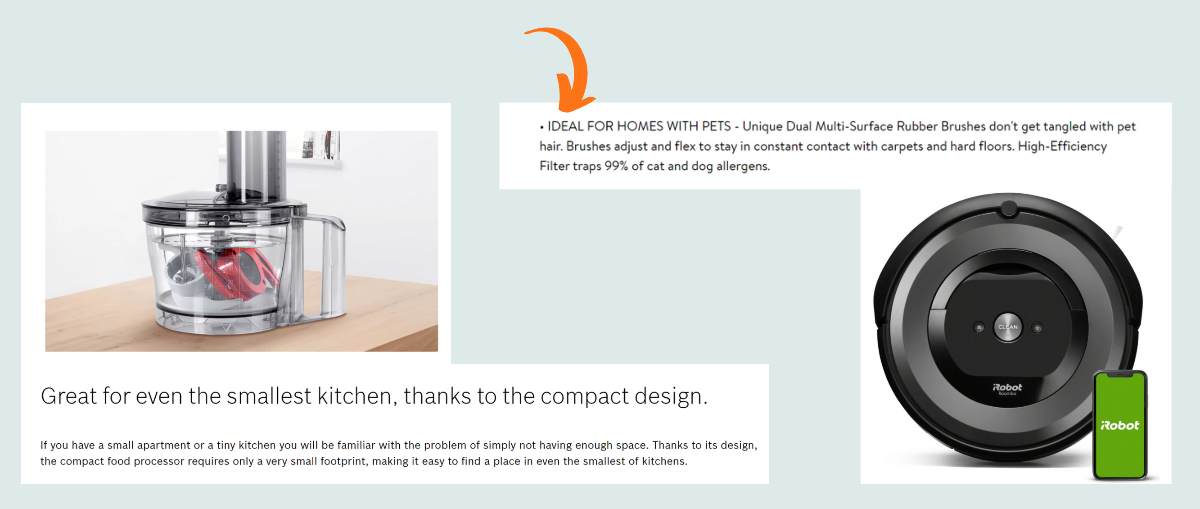
5. Tie benefits to Product Features
Why is your product valuable?
Remember that customers aren't buying products; they're buying results and experiences. That's why you should not just sum up your product features but also tie benefits to specific product attributes.
A good example of a product page where benefits follow product features is the one of a Tefal coffee maker:
- 0,6 L capacity (feature) for up to 6 cups (benefit)
- Permanent filter (feature) no more need of filter papers, easy to clean (benefit)
- Anti-drip system (feature) for coffee any time during the brewing cycle without fear of drips (benefit)
- Transparent water tank (feature) for easy filling and dosing (benefit)

Another great example of how you can totally change the impact you make while simply mentioning the material of your product or describing what the benefit is for the person that is considering buying your product.
- On the left side, the focus is on the feature - materials the product is made of.
- On the right side, clear benefits are tied to these specific product attributes.
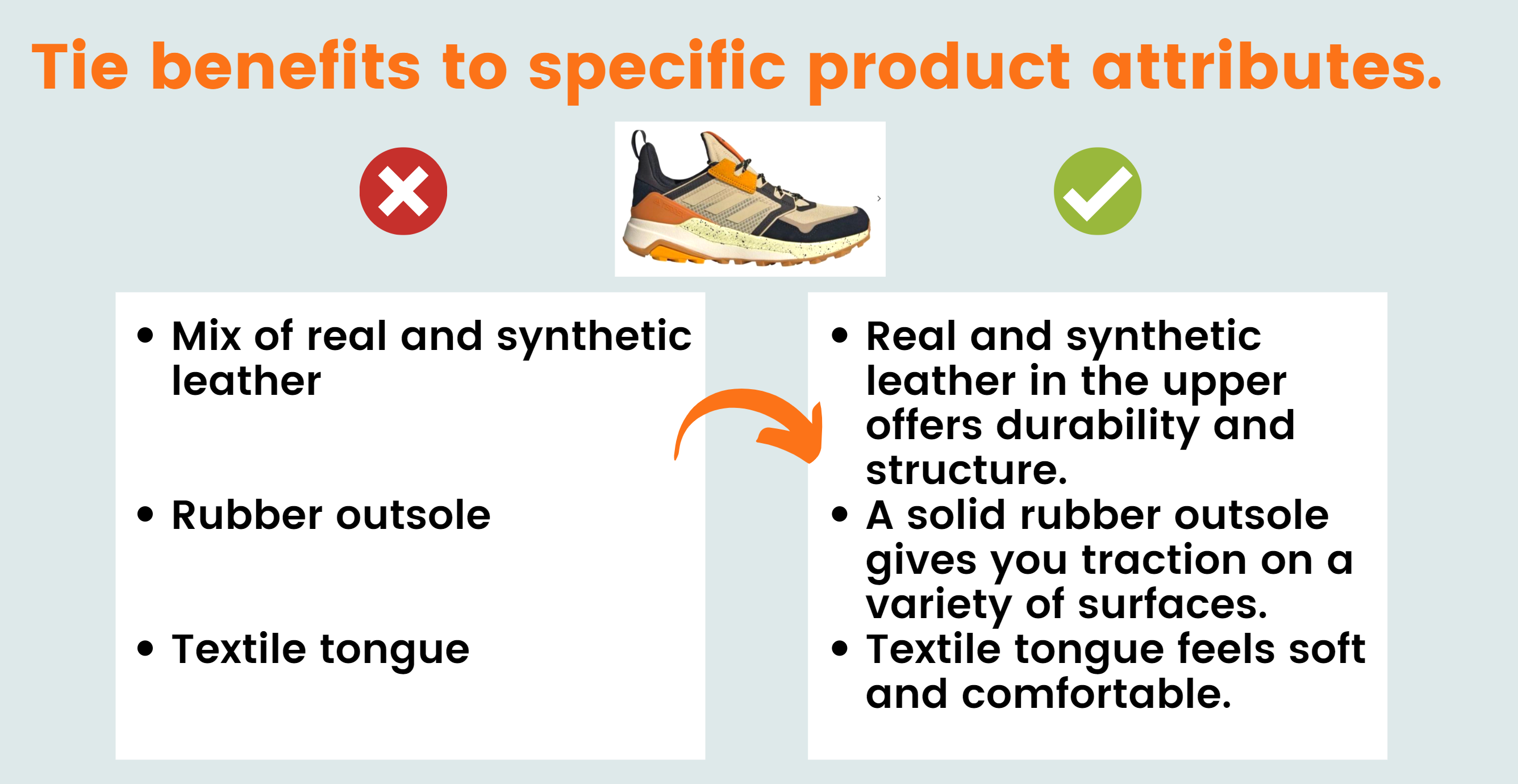
Which version looks more attractive to you, and which product would you be more likely to buy?
Using words such as 'offers', 'gives', and 'feels' can easily connect your product's features and their benefits.
Make your product come to life. Try it yourself!
6. Capture your Readers' Imagination

Let your reader imagine what it would be like to own your product, being in that moment.
Use sensory words
Use sensory words to describe the sound, smell, feel, taste or sight of the product.
Sensory words increase sales because they make your reader experience your product while reading.
In the example below, Nike uses the words "feels like" to make the reader imagine herself running with these shoes that are so light weighted that you hardly feel them.
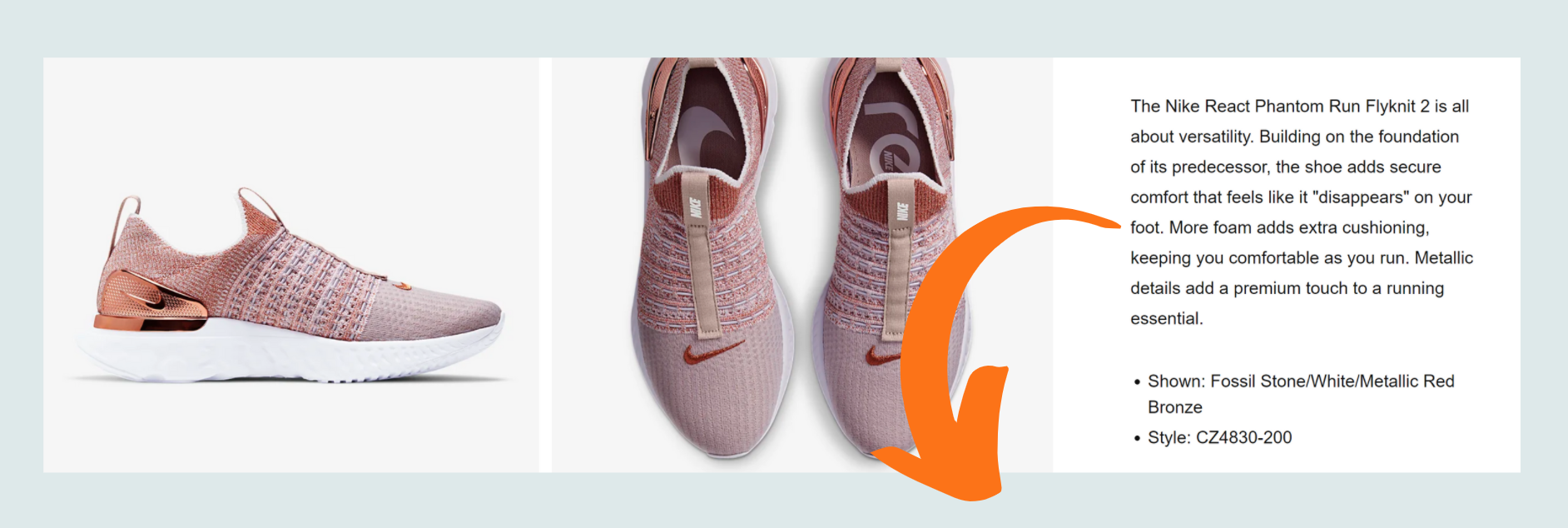
"feels like it 'disappears' on your foot."
Tony's Chocolonely seems to know how to sprinkle sensory words all over their product descriptions, to make the visitor imagine that sweet, crispy, and creamy mouthfeel:

Humor sells!
Not only sensory words help increase sales. Humor is another great way to get and keep the attention of your reader! Tony's Chocolonely: "You'll probably enjoy it cherry much..".
Humor sells. Laughter breaks down barriers. It's a natural way to create affinity and trust.
Tell a story
When you are reading a story, you forget that you're being sold to, but you will easier remember what you've read - Win-win!
Create a mini-story around your product.
Stories are 20 x more memorable than facts.

If you cannot find the inspiration to make a story around your product, answer the following questions:
- What inspired creating the product?
- What are the roots of your product or the products' material?
- Are you making the product yourself? Or where is it produced, and by who?
- What impact makes your product on the world?

7. Add Social proof
Finish your product description by including social proof (a quote, review, or award).
Online shoppers trust recommendations from other consumers above anything else! In general, shoppers rely more heavily on reviews when looking for specific products. But what product types affect the riskiness of purchase the most and make ratings and reviews even more important?
Highly-priced products
When the price of a product is higher, there is more risk involved in the consumer's decision, and the customer takes more time and effort before buying the higher-priced product. Having more information via reviews helps to reduce that risk.
New products or seasonal products
Reviews are widely considered a major driver for new products and services diffusion. Online retailers, product manufacturers, and brands may need to pay more attention to early-stage reviews and find a way to promote favorable reviews at that stage.
Safety and Health-related products
How much the product affects health and safety is another important factor influencing the importance of reviews during the buying decision process. For example, a shopper will likely read more reviews when purchasing a new car seat for her child than purchasing toilet paper.
Ensure that you show sufficient reviews on the product pages of products for which reviews are especially important for shoppers.
8. Be findable
The top positions on a Search Engine Result Page are the most visible to the site visitors of an eCommerce retailer. These top products typically get the vast majority of the clicks and thus conversions.
To make your products visible and improve the on-site search performances of your products:
- Incorporate frequently used keywords to your product descriptions;
- Put the most important info & keywords at the beginning of your product description;
- Constantly optimize your product description with keywords that your shoppers are looking for: Monitor search behavior and rankings.
And Learn from Reviews
Reviews provide fresh and unique content to your product page and valuable input in consumers' language.
You should constantly monitor and analyze review texts to align product content.
9. Monitor the Quality of Content
On all eCommerce Channels!
Creating great product descriptions and other product content is not for everyone. You need to know your product and the ideal buyer by heart. It would be best to make your product descriptions come to life using great writing skills, including creativity and imagination.
Let's assume you are that great writer, or you have someone who does the job for you, and you come to the point that product content is published on multiple sales channels.
Do you then believe the job is done?
It is not!
Be sure that you:
- Provide unique text for each sales channel to improve search rankings. Many brands republish the same content repeatedly. Big chance that Google will not index these product detail pages within top search results.
- Use language used by your customers. Shape content to meet the buying needs of the consumer on each specific shopping channel.
- Monitor the quality of content to avoid incorrect data being published <-- This is also one of our 6 tips to reduce product returns.
Watch the On-demand Webinar: Product Content Monitoring & Its Effect on Retail Search Performances
